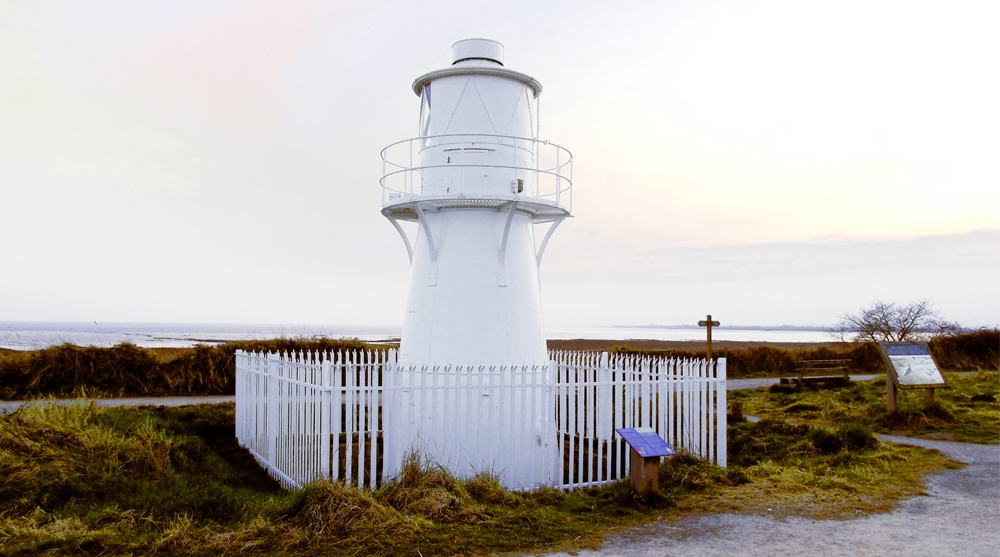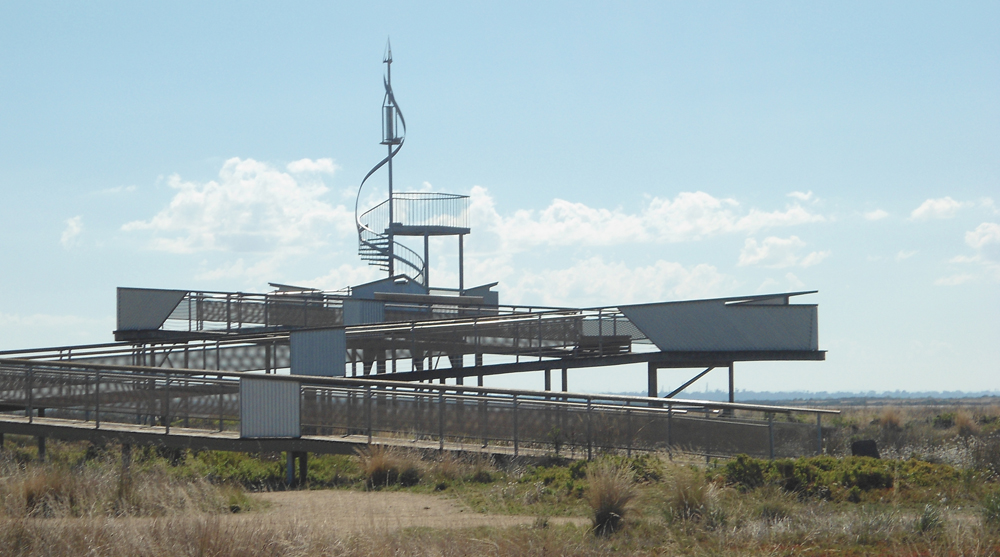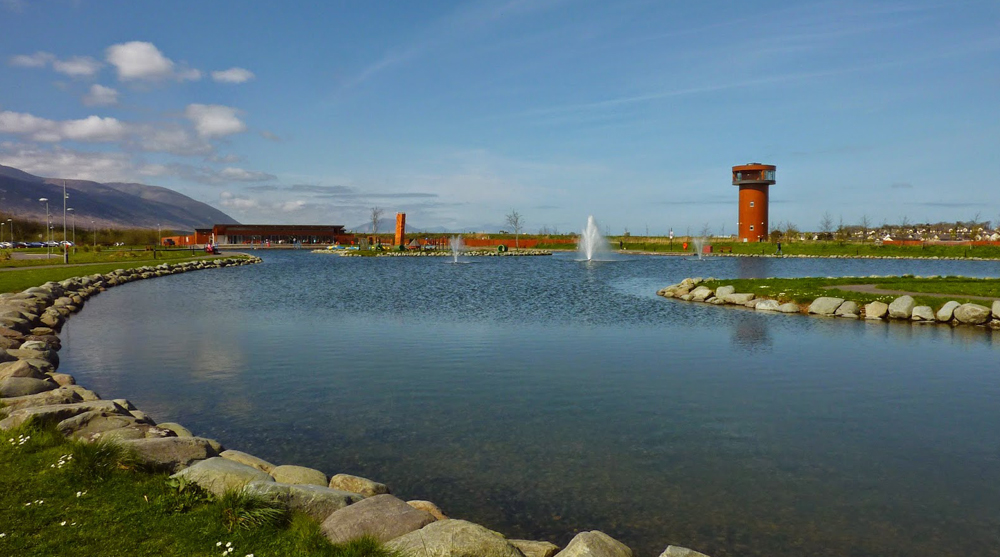The unique composition of wetlands reserves makes for an inviting home for a diverse array of birds and wildlife. It also makes their accessibility to visitors very different to other types of nature reserve. With much of the landscape fairly flat, observation towers have the advantage of not needing excessive elevation to provide interesting views of the reserve, allowing architects to create diverse structures that suit and support each wetlands reserve.
1. The East Usk Lighthouse, Newport Wetlands, UK

The East Usk Lighthouse is a popular tourist attraction in the Newport Wetlands Reserve, and still functions as a lighthouse to this day. Image source
Newport Wetlands Reserve is a haven for wildlife in the region, home to bird species such as Cetti's warblers and bearded tits, as well as ducks, geese and swans. Fed by the Severn estuary, the wetlands are a popular attraction all year round, with an RSPB visitor centre, cafe, shop, and children’s play area.
The East Usk Lighthouse is a popular attraction particularly with photographers, and unlike its counterpart the West Usk Lighthouse - which has been decommissioned and operates now as a hotel - the East Usk Lighthouse still sends out flashes of light every 10 seconds. Playing a vital role in marine safety for over 100 years, the East Usk Lighthouse was originally built on legs that were eventually covered as the level of the land increased (due to the tipping of fly ash from the Uskmouth Power Station).
2. The Tower viewing deck at Cheetham Wetlands

The Cheetham Wetlands Tower provides visitors with a unique vantage point to view the reserve. Image source
Australia’s Cheetham Wetlands are located approximately 20 km southwest of Melbourne. Spanning 420 hectares, the Cheetham Wetlands are home to both natural and artificial lagoons, created on old salt works land.
The Cheetham Wetlands are a crucial bird haven, providing important feeding and habitat areas for thousands of migratory birds from regions such as Siberia, New Zealand, and Japan.
The Tower within the wetlands reserve provides visitors with a unique vantage point from which to view the sensitive ecology of the wetlands, providing a striking contrast of the city skyline as a backdrop to the marshes.
The tower has ramped access to the main observation deck, but the very peak is only accessible via a circular staircase.
The Tower is a public art commission and was built as a dedication to "Migration and Aspirations"; a visual symbol and celebration of migration to Australia which connects visitors with the migrating wildlife.
3. The Tralee Bay Wetlands Nature Reserve

The Tralee Bay viewing tower reaches 20 metres, offering visitors views of the 8000-acre reserve. Image source
The Tralee Bay Nature Reserve encompasses over 8,000 acres with an activity area that is free to access. Visitors can enjoy lakeside walks and use the picnic area as well as take pedal boats, canoes and rowing boats out onto the lake. There is also a smaller lake stocked with freshwater fish that has demonstrations for those who wish to learn how to fish.
The Tralee Bay Wetlands Nature Reserve has an interactive wildlife exhibition for guests to experience, including a guided nature boat tour, bird hides and a nature boardwalk. The real attraction is the viewing tower which reaches a height of 20 metres, offering visitors views of the massive reserve which reaches out into the mouth of the bay and the beautiful Slieve Mish mountains.
4. The Peacock Tower at the London Wetland Centre
Peacock Tower and the London Wetland Centre is a three storey hide which can be accessed by a lift. Image source
The London Wetland Centre brings the countryside to London, and is home to some 180 species of wildlife. First opened in 2000, the site is formed of four disused Victorian reservoirs positioned in a loop in the River Thames. In 2002, 29.9 hectares was designated a “Site of Special Scientific Interest” by the Barn Elms Wetland Centre. The wetlands contain lakes, pools, and gardens that are home to a great variety of birds such as kingfishers and sand martins as well as wading birds and plenty of ducklings to fawn over.
The London Wetland Centre has incorporated six hides within its grounds, including their three storey hide, the Peacock Tower, which can be accessed by a lift. Each of the hides is ideal for wildlife watching and photography, providing up-close views of birds, butterflies, dragonflies, frogs, lizards, water voles, and all sorts to the patient observer.
The Abu Dhabi Flamingo Observation Tower competition
Even in regions where wetlands do not occur naturally, they offer visitors a chance to interact with some unique wildlife.
In collaboration with Environment Agency - Abu Dhabi (EAD), the Abu Dhabi Flamingo Observation Tower competition is calling for submissions for designs for an observation tower in the Al Wathba Wetland Reserve in Abu Dhabi. The man-made reserve in the UAE capital is home to a spectacular flock of some 4,000 migratory flamingos during the winter months.
Participants are being asked to create designs for an observation tower and accompanying boardwalk so that visitors can fully immerse themselves in the stunning wildlife of the reserve. Projects will need to be mindful of the unique environment, as well as have the potential to become an iconic landmark in the region.
Top 3 Reasons Why You Should Enter Architecture Competitions
Curious about the value of architecture competitions? Discover the transformative power they can have on your career - from igniting creativity and turning designs into reality, to gaining international recognition.
Learn more



























